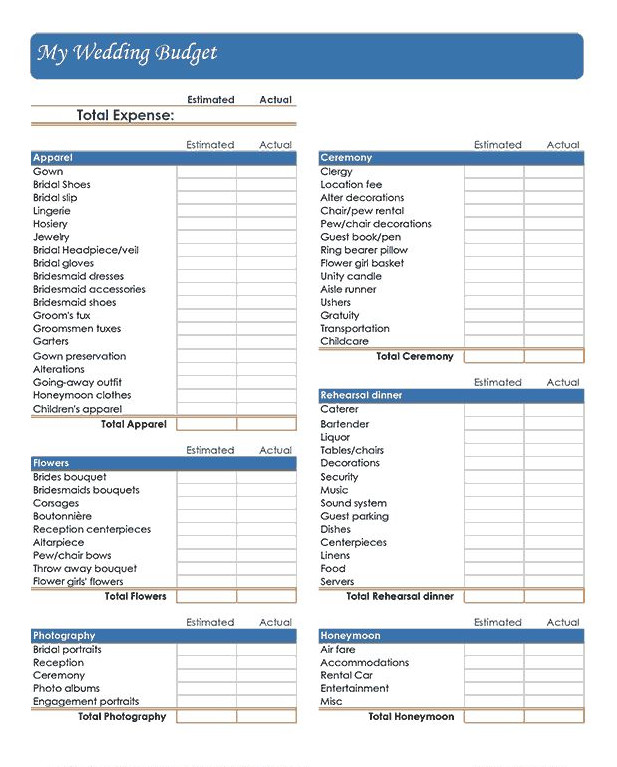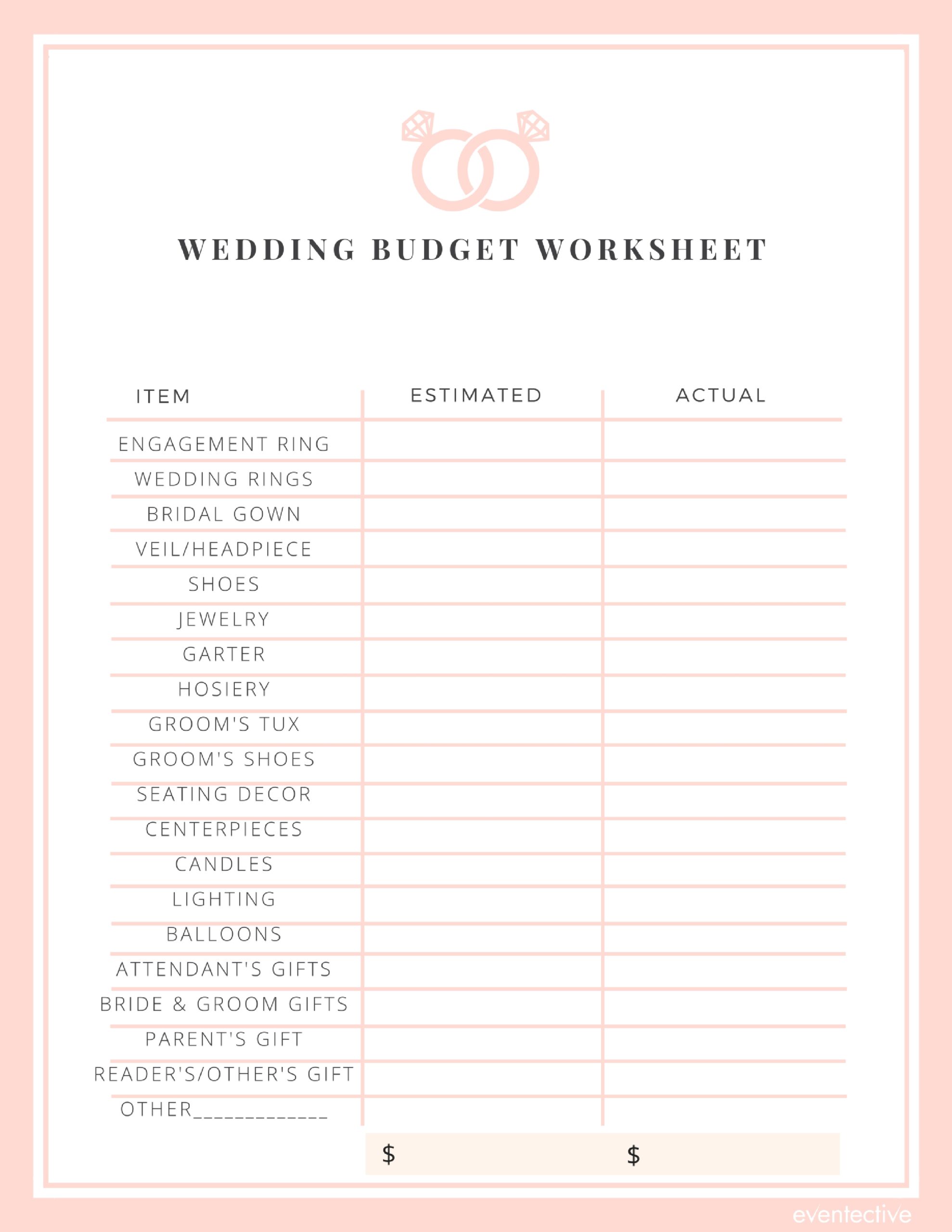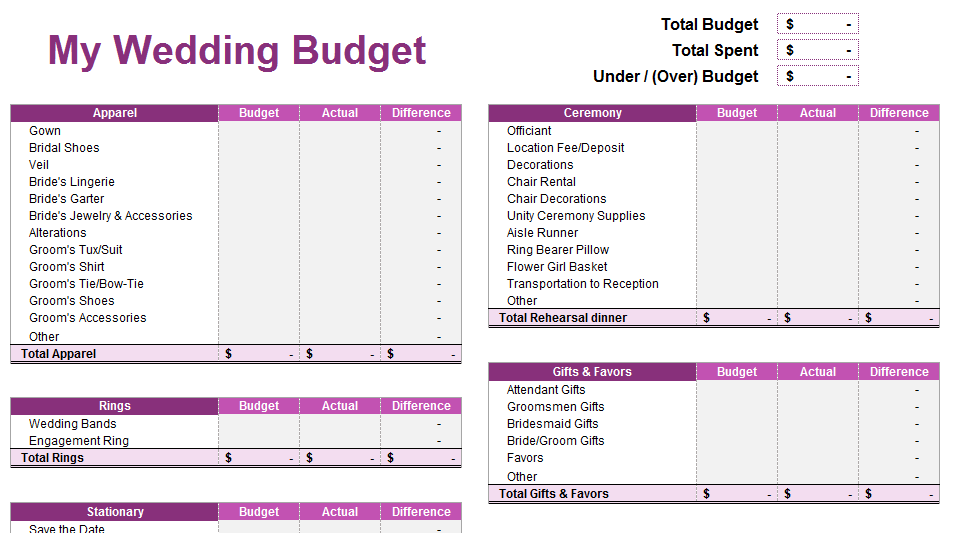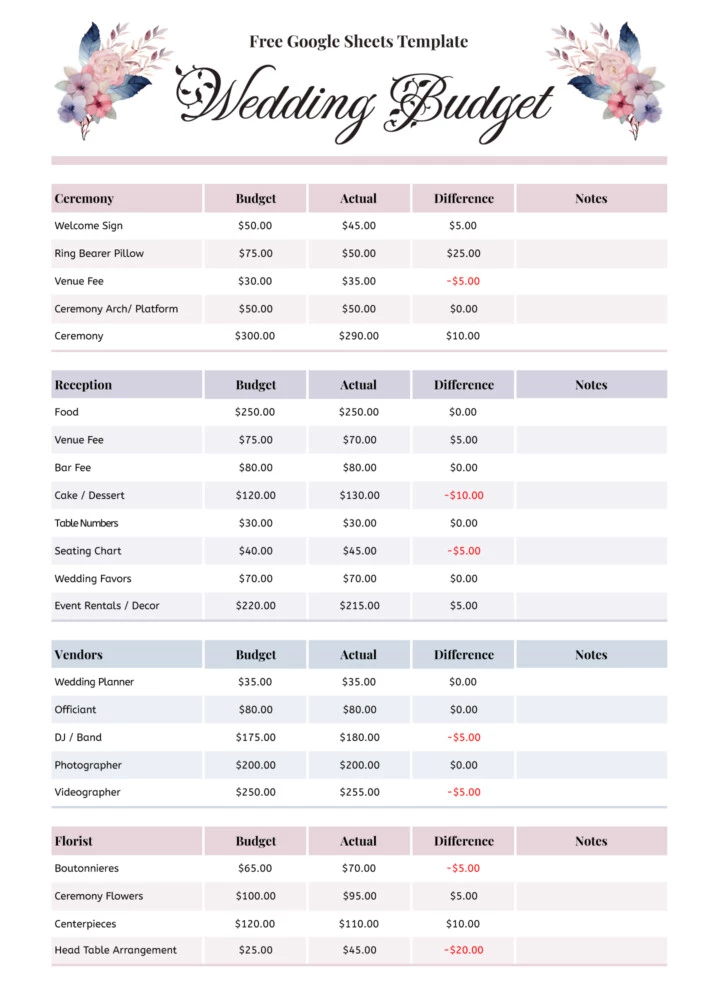Your wedding day is one of the most important days of your life, and it’s only natural that you want everything to be perfect. However, planning a wedding can also be stressful and overwhelming, especially regarding the financial aspect. That’s where a detailed wedding budget can come in handy.
By creating a budget and sticking to it, you can ensure a beautiful and memorable wedding without overspending or causing conflicts with your family and partners.
What is a Detailed Wedding Budget?
A detailed wedding budget is a tool that helps couples plan their wedding expenses in a systematic and organized manner. It provides a comprehensive breakdown of all the costs involved in a wedding, from the venue and catering to the flowers and decorations.
By using a budget template, couples can track their expenses, make informed decisions, and avoid overspending.

Why Should You Use a Detailed Wedding Budget?
Planning a wedding without a budget is like driving without a map – you’ll likely get lost and end up spending more than you intended. Here are a few reasons why using a detailed wedding budget is essential:
- Helps you plan within your means: A budget allows you to set realistic spending limits based on your financial situation. It helps you prioritize your expenses and allocate funds accordingly.
- Avoids overspending: Without a budget, it’s easy to get carried away and overspend on unnecessary items. A wedding budget helps you stay on track and prevents you from going overboard.
- Makes informed decisions: By having a clear breakdown of your expenses, you can make informed decisions about where to allocate your funds. You can identify areas where you can cut costs or invest more based on your priorities.
- Prevents conflicts: Money can be a sensitive topic, and disagreements over wedding expenses can lead to conflicts with your family and partners. A budget helps you set expectations and ensures that everyone is on the same page.
How to Create a Detailed Wedding Budget
Creating a detailed wedding budget may seem daunting, but it’s quite manageable if you break it down into smaller steps. Here’s a step-by-step guide to help you create your own wedding budget:
1. Determine your total budget
The first step is to determine how much you can afford to spend on your wedding. Consider your savings, contributions from family members, and any other sources of funding. This will give you a realistic idea of your total budget.
2. Prioritize your expenses
Next, prioritize your wedding expenses based on what is most important to you. Allocate a percentage of your budget to each category, such as venue, catering, attire, decorations, and entertainment. This will help you distribute your funds wisely.
3. Research costs
Research the average costs of wedding vendors and services in your area. This will give you a rough estimate of how much you should allocate to each category. Take into account any special requests or preferences you may have, as these may impact the overall cost.
4. Create a spreadsheet or use a template
Once you have gathered all the necessary information, create a spreadsheet or use a template to create your wedding budget. List all the categories and subcategories, along with their estimated costs. Leave room for actual expenses, so you can track your spending as you go.
5. Track your expenses
As you start booking vendors and making purchases, enter the actual expenses in your budget spreadsheet. This will help you stay on top of your spending and make adjustments if needed. Remember to keep all receipts and invoices for reference.
6. Review and adjust as necessary
Periodically review your budget and compare your actual expenses to your estimated costs. Make adjustments as necessary, reallocating funds from one category to another if needed. This will help you stay on track and avoid any surprises along the way.
Examples of Detailed Wedding Budget Templates
There are numerous detailed wedding budget templates available online that you can use as a starting point. Here are a few examples:




Tips for Successful Wedding Budgeting
Creating a wedding budget is just the first step. To ensure your budgeting efforts are successful, here are a few tips to keep in mind:
- Be realistic: Set realistic expectations and be honest with yourself about what you can afford. Don’t stretch your budget too thin and end up in debt.
- Research prices: Do thorough research on vendors and services to get the best prices. Don’t settle for the first option you come across – shop around and compare prices.
- Communicate with your partner and family: Involve your partner and family in the budgeting process. Discuss your financial limits and expectations openly to avoid conflicts later on.
- Leave room for unexpected expenses: Weddings often come with unexpected costs. Leave some buffer in your budget to accommodate any surprises that may arise.
- Track your spending: Regularly update your budget spreadsheet with actual expenses. This will help you stay on track and make adjustments if necessary.
- Be flexible: Priorities may change as you plan your wedding. Be open to making adjustments to your budget and reallocating funds based on your changing preferences.
- Celebrate within your means: Remember that the most important thing about your wedding day is the love and commitment you share with your partner. Don’t let financial stress overshadow the joy of the occasion.
In Conclusion
A detailed wedding budget is a valuable tool that can help couples plan their wedding within their means, avoid overspending, and make informed decisions. By following the steps outlined in this article and using the available templates, you can create a budget that suits your needs and ensures a memorable wedding day without unnecessary financial stress.
Remember to communicate openly with your partner and family throughout the process and be flexible in your planning. With proper budgeting, you can have the wedding of your dreams while staying true to your financial reality.
Detailed Wedding Budget Template – Download